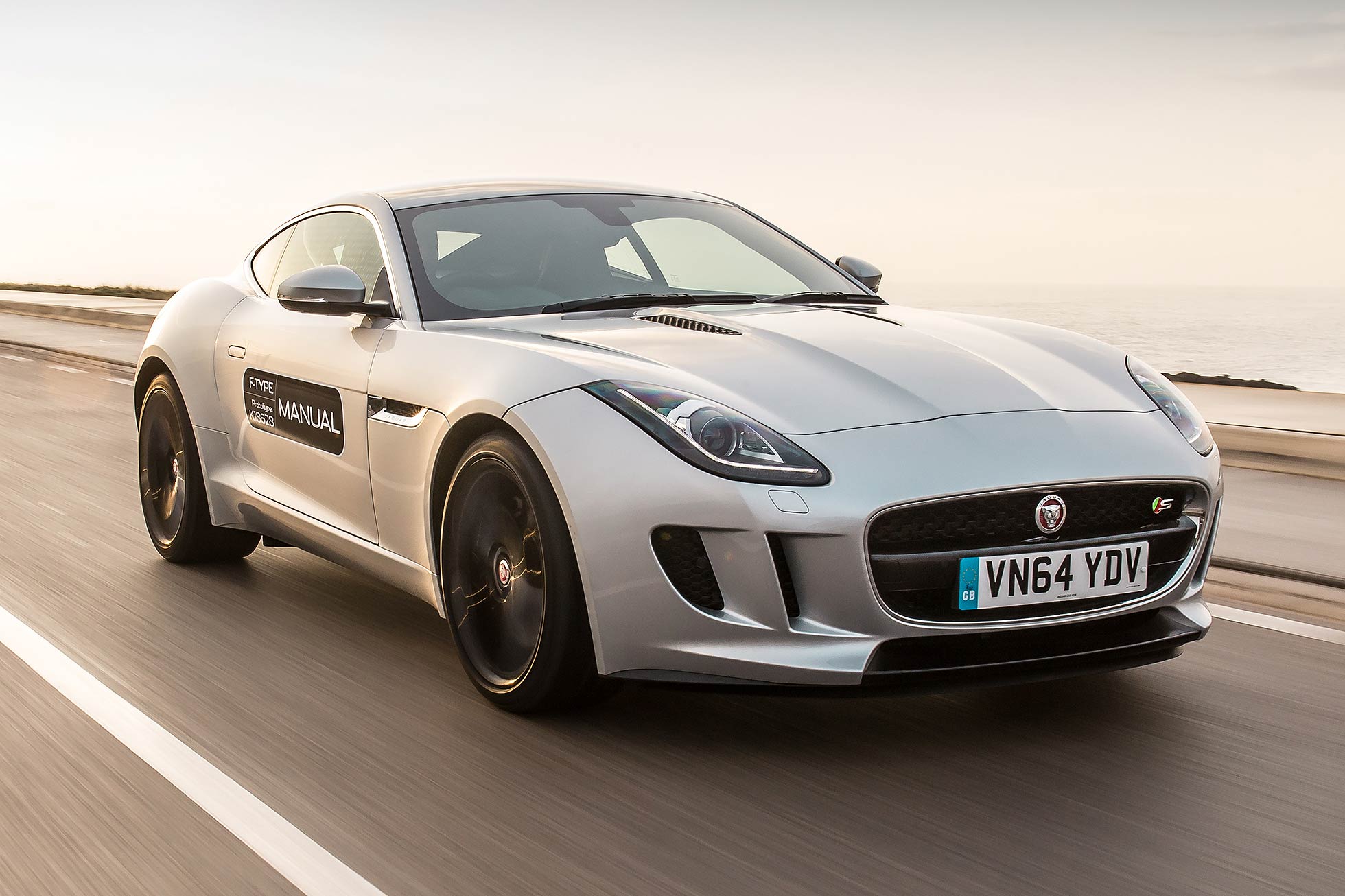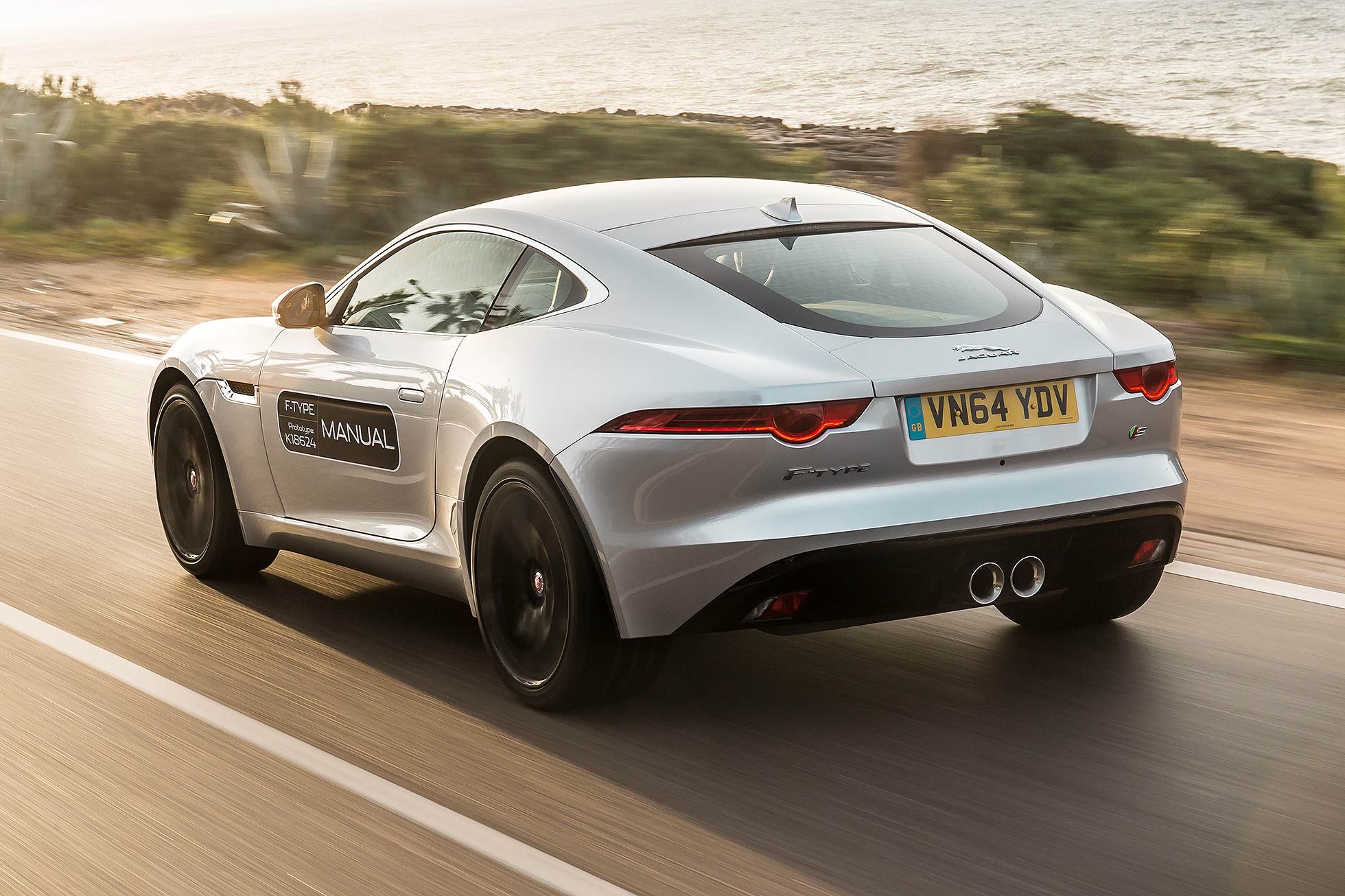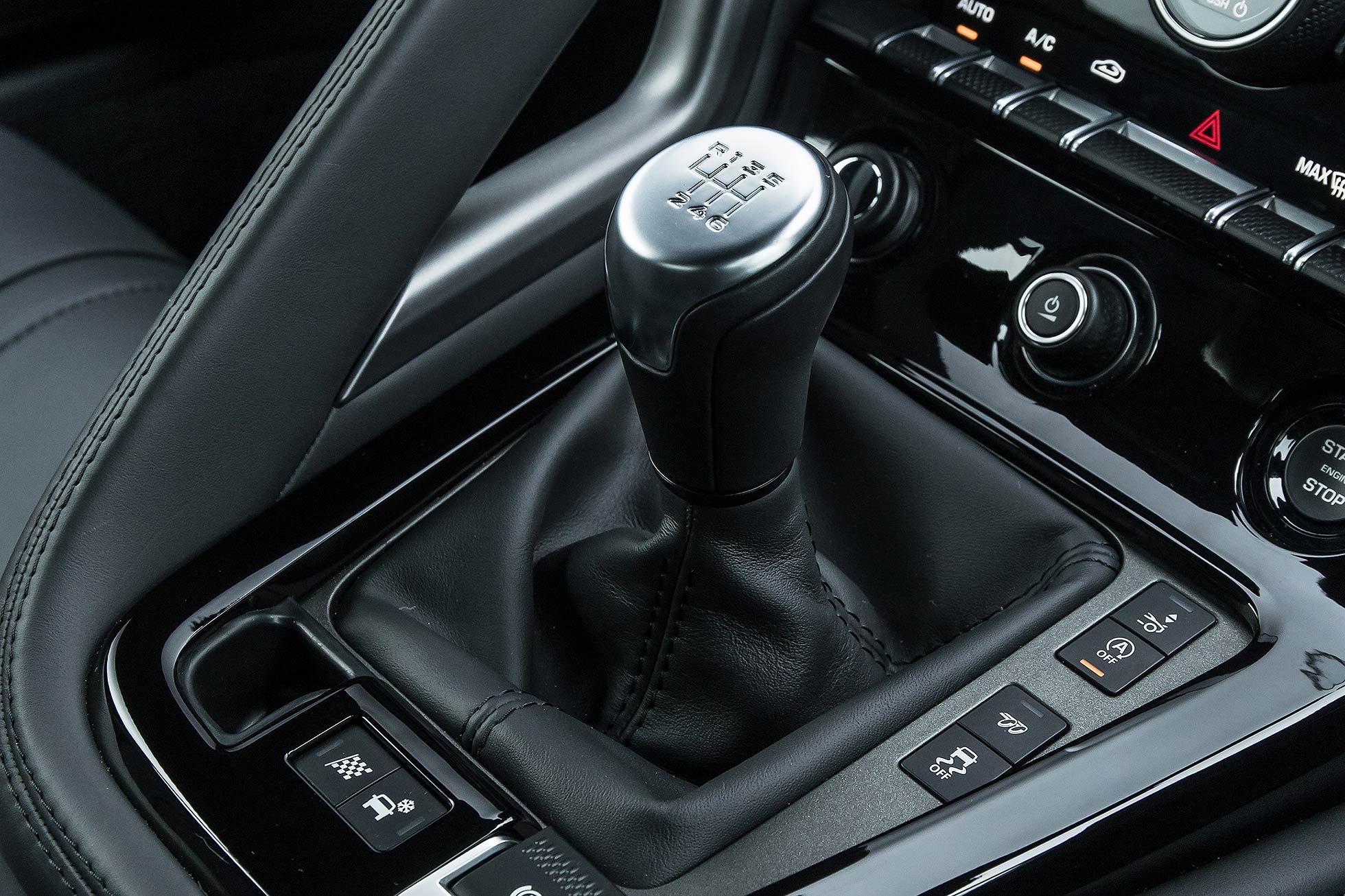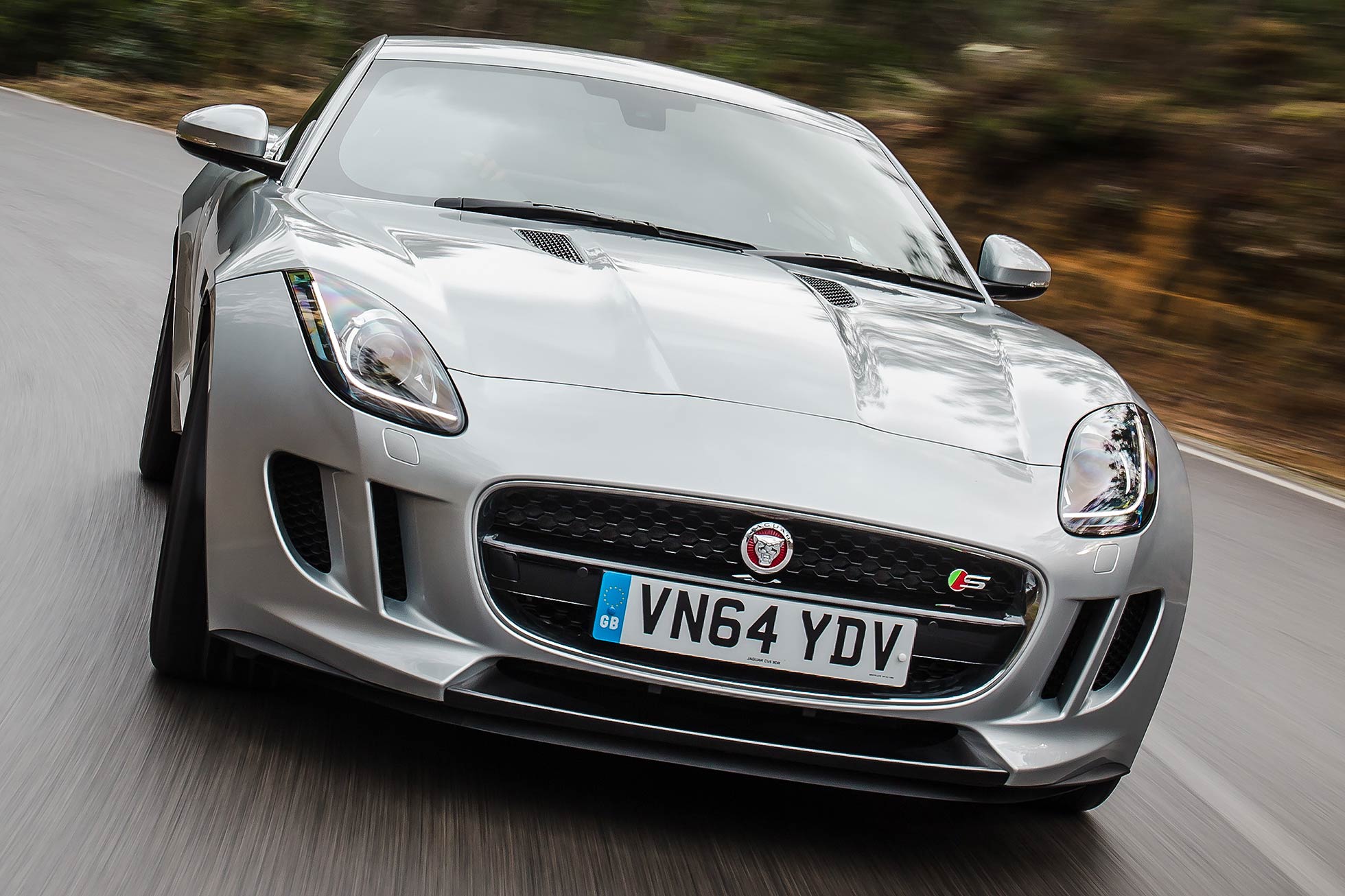
Jaguar delivers what purists want: the F-Type manual is the most enthusiastic F-Type yet
Richard Aucock | February 2015
For hardcore sports car enthusiasts, only a stick-shift will do. Automatic gearboxes are all well and good – Jaguar’s latest eight-speed ZF unit is exceptional – but nothing beats the interaction you get with a manual.
Trouble is, they’re getting thinner on the ground these days. You can’t buy a manual-gearbox Ferrari, for example. Porsche still offers them, but most models sold are PDK automatics. Even Lotus is now offering automatic versions of the Exige S, and it wouldn’t invest so much of its sparse resources in doing this if demand wasn’t there.
And so, enter Jaguar. Since launch, the F-Type has been automatic-only, and nobody expected this to change. But it has: against the odds, Jaguar has launched a six-speed manual version, offered in both iterations of 3.0-litre supercharged V6. Surprising, yes – and very welcome indeed.
On sale in the spring, it takes entry prices down to £51,250 for the 3.0 V6 340 Coupe – closer to the magical £50k mark and £1,800 cheaper than the auto – and, while uptake is small, shows Jaguar’s eagerness to appeal to the enthusiast market, particularly in the US where the stick-shift is expected to be well received.
But has it been worth it? Well, if you like changing gear yourself, you’re in for a treat…

What’s the 2015 Jaguar F-Type manual like to drive?
We drove the F-Type manual in 380hp V6 S Coupe guise, likely the most popular of the two engines despite the base car’s appealing price.
It’s a really nice manual gearbox installation. Jaguar’s worked hard on engineering a snappy, short-throw gearchange, with a slick, mechanical action. The gearbox is a ZF unit – the same as used by BMW – which helps, but the considerate installation Jaguar’s done makes sure it’s as pure as can be. The stubby little gearlever is wonderful.
The firm has even poured over the clutch engineering, to make sure it has lots of feel, isn’t too heavy and provides the accuracy driving enthusiasts presumably erring towards the manual so desire. The firm knows people will choose this car for a reason – full engagement – so it’s ensured everything about the manual drivetrain delivers.
It doesn’t disappoint in action. Shifts are precise and slick, it’s not intimidating and you soon get into the flow of things. Jaguar pointedly hasn’t developed any auto-blip downshift controls, forcing the driver to do this on their own, but the natural feel provided, and careful placement of the pedals, mean it soon becomes natural.
It is – whisper it – probably slower in action than the hyper-efficient automatic, as the abuse required to hit headline acceleration figures just doesn’t come naturally when you have a drivetrain this nice. But that’s not the point. This is all about the experience.
Besides, the torquey V6 is such a nice engine to use, with a harmonious, sonorous and super-smooth soundtrack, it’s no hardship to ride along at low revs if you wish. Drivers will probably change gear less than they expect, maybe just using third and occasionally second on twisting roads, and the F-Type manual seems fine with that. It’s a car that gives extra interaction, but doesn’t demand it all the time. Perfect for its target market.

Is the F-Type manual even more of a modern day E-type?
Jaguar proudly reminded us the manual-gearbox F-Type is the first stick-shift Jaguar sports car since the E-type back in the 1960s (the XJ220 was, of course, a supercar…). Maybe for this reason, it’s only offering it in rear-wheel drive six-cylinder guise, to make sure the soundtrack and promise of tail-tweaking corner exits in second gear is genuine.
The engineers know it’s all psychological. The process of stirring a gearlever manually may not be very efficient (it’s over half a second slower to 62mph!) but it does press all the ‘real driving’ buttons enthusiasts want – and, riding along at 4,000rpm in second or third gear, it’s hard not to think back to the world’s most famous Jaguar.
The E-type was launched with a four-speed manual and it took five years for an automatic – a three-speed, no less! – to arrive. But development of the car meant customers increasingly preferred the self-shifter, particularly in the big V12.
This will remain the case with the F-Type. The V8 isn’t even offered with the new manual, and never will be. But in creating a V6 option, Jaguar has developed a car more minimalist in spirit that, like the E-type, simply seems that bit more genuine and pure. Very few people are likely to, but we think the idea of a base 340hp V6 Coupe is very appealing and helps reposition the F-Type as more of the enthusiast’s pick. Just what Jaguar intended.

Verdict: 2015 Jaguar F-Type manual
Jaguar didn’t need to launch a manual-gearbox F-Type, but the fact it has is to be warmly welcomed. It shows the firm wants to appeal to enthusiasts, thinks drivers deserve the option of buying a stick-shift car even if most are not expected to.
It’s this sort of respect for its customers that endears people to Porsche: it says it will offer manual gearboxes for as long as people want them, even if it’s just a handful. Now Jaguar’s doing the same, and we warmly welcome the arrival of the manual F-Type. Even if the eight-speed auto remains the more accomplished car…
Rivals: 2015 Jaguar F-Type manual
Porsche 911
Porsche Cayman GT4
Corvette Stingray
Specifications: 2015 Jaguar F-Type V6 S Coupe manual
Engine: 3.0-litre supercharged V6
Gearbox: six-speed manual, rear-wheel drive
Price: £60,250 (range starts from £51,250)
Power: 380hp
Torque: 332lb ft
0-62mph: 5.5 seconds
Top speed: 161mph
MPG: 28.8mpg
CO2: 234g/km
Hi,
I have a 2016 V6 manual and I love the car. I had a XJ-S 3.6 manual, so the F type was a natural progression. I read other reviews that said the pedals were in the incorrect position but personally I could not see their point of view.
My car has the generation 1 clutch in it so I am concerned because Jaguar are now producing the 4th version. If this car had the production numbers of say a Ford mondeo I would not be concerned but as they only produced approximately 4% manuals the forum comments about clutch slippage are very relevant and should be taken into account.